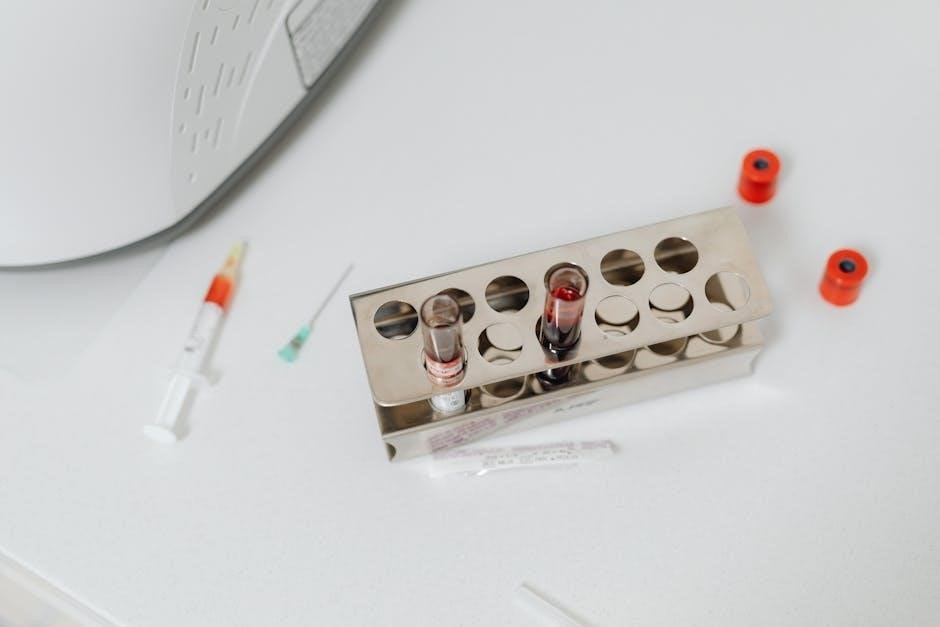Phlebotomy worksheets are essential resources for students and educators, offering structured learning materials in PDF format. They cover key concepts, procedures, and exercises to master phlebotomy skills effectively.
1.1 What Are Phlebotomy Worksheets?
Phlebotomy worksheets are educational resources designed to aid students and professionals in mastering phlebotomy techniques and concepts. Available in PDF format, these worksheets provide structured exercises, quizzes, and study guides to enhance learning. They cover essential topics like blood components, venipuncture procedures, and safety protocols. Worksheets often include interactive elements such as drag-and-drop exercises and multiple-choice questions to reinforce knowledge retention. They serve as practical tools for both classroom instruction and self-study, helping learners develop the skills and confidence needed for successful phlebotomy practice.
1.2 Importance of Using Worksheets in Phlebotomy Training
Phlebotomy worksheets are vital tools for effective training, offering a structured approach to learning and retaining critical skills. They provide hands-on practice for mastering procedures, such as venipuncture and blood collection, while reinforcing theoretical knowledge. Worksheets help students apply concepts like blood components, tube additives, and safety protocols. They also include exercises and quizzes to assess understanding and prepare for certification exams. By using worksheets, learners can develop confidence and proficiency in a controlled environment, ensuring they are well-prepared for real-world scenarios in healthcare settings.
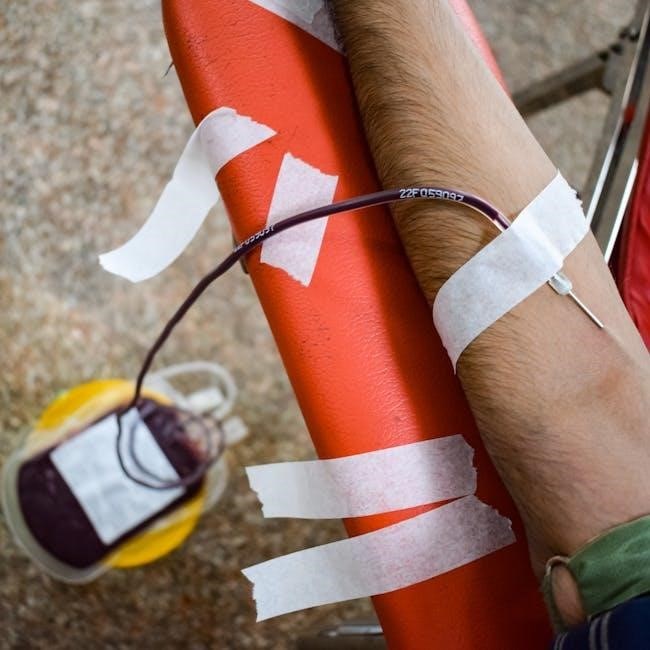
Core Concepts Covered in Phlebotomy Worksheets
Phlebotomy worksheets cover essential topics like blood components, order of draw, vein selection, and medical terminology, providing a comprehensive foundation for mastering phlebotomy skills and procedures effectively.
2.1 Blood Components and Their Functions
Phlebotomy worksheets often include detailed sections on blood components, such as plasma, red blood cells, white blood cells, and platelets. Each component’s role in the body is explained, helping students understand their functions in oxygen transport, immune response, and clotting. Worksheets may also cover how these components are analyzed in lab tests, emphasizing their importance in diagnosis and treatment. This foundational knowledge is crucial for phlebotomists to ensure accurate blood collection and handling, directly impacting patient care and laboratory results. Understanding blood components is a key skill for mastering phlebotomy techniques and procedures effectively.
2.2 Order of Draw: Understanding Tube Additives and Sequencing
Phlebotomy worksheets emphasize the importance of the order of draw, a critical step in blood collection. The sequence ensures accurate test results by preventing cross-contamination from additives in different tubes. Worksheets detail the proper order, starting with blood culture tubes, followed by coagulation, serum separator, and heparin tubes. They also explain the role of tube additives, such as clot activators and gel separators, and how they affect blood samples. Mastering this process is essential for reliable lab results and patient care, making it a key focus in phlebotomy training materials.
2.3 Vein Selection and Anatomy
Phlebotomy worksheets highlight the importance of vein selection and anatomy in successful blood collection. Commonly used veins include the median cubital, cephalic, and basilic veins, each with unique anatomical features. Worksheets detail the structure of veins, including the tunica intima, media, and adventitia layers, and explain how to identify suitable veins based on size, accessibility, and patient factors. Proper understanding of venous anatomy enhances accuracy in venipuncture, reducing complications and improving patient comfort. Interactive diagrams and exercises in worksheets help students master vein identification and selection skills.
Safety Protocols in Phlebotomy Practice
Safety protocols in phlebotomy involve standard precautions, proper use of PPE, and safe needle handling to prevent exposure to bloodborne pathogens. Worksheets emphasize adherence to these practices.
3.1 Standard Precautions and Infection Control
Standard precautions are critical in phlebotomy to prevent the transmission of bloodborne pathogens. Worksheets emphasize proper hand hygiene, use of personal protective equipment (PPE), and safe handling of blood specimens. These protocols ensure a safe environment for both patients and healthcare workers, reducing the risk of infection. By following these guidelines, phlebotomists can maintain sterile conditions and adhere to infection control practices effectively. Educational resources, such as PDF worksheets, provide detailed scenarios and exercises to reinforce these essential safety measures in daily practice.
3.2 Needle Safety and Handling
Proper needle safety and handling are vital to prevent needlestick injuries and exposure to bloodborne pathogens. Worksheets emphasize using safety needles with protective shields and never recapping used needles. Phlebotomists should handle needles with care, ensuring they are securely placed in puncture-resistant containers after use. These resources provide clear guidelines and exercises to reinforce safe practices, helping students master proper techniques and maintain a safe working environment. Regular training and adherence to these protocols are essential for minimizing risks in phlebotomy practice.
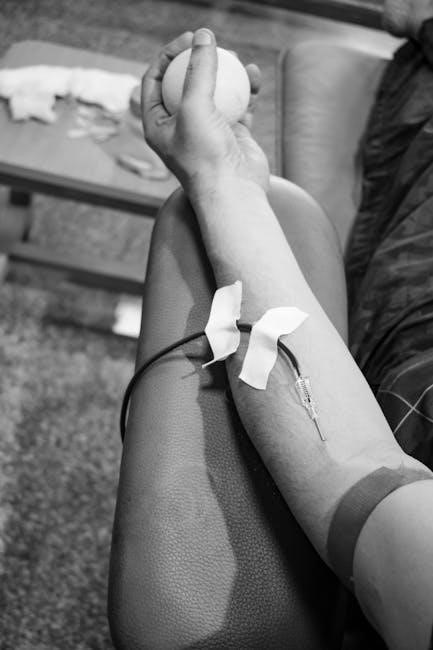
Blood Collection Techniques
Mastering blood collection techniques is crucial for phlebotomists. Worksheets provide step-by-step guides for venipuncture, addressing common challenges like difficult draws and patient anxiety with practical solutions.
4.1 Venipuncture Procedure: Step-by-Step Guide
Phlebotomy worksheets provide a detailed, step-by-step guide to venipuncture, ensuring proper technique and safety. The process begins with patient preparation, including identification and positioning. Next, the phlebotomist selects an appropriate vein, cleans the area, and inserts the needle at the correct angle. Blood is collected into the appropriate tubes, following the order of draw to avoid contamination. After collection, the needle is withdrawn, and pressure is applied to prevent bleeding. Worksheets often include visual aids and checklists to reinforce these steps, ensuring accuracy and patient safety during blood collection procedures.
4.2 Common Challenges and Solutions in Blood Drawing
Phlebotomy worksheets address common challenges in blood drawing, such as difficult vein access or patient anxiety. Solutions include using proper techniques for vein selection, ensuring patient comfort, and maintaining clear communication. Worksheets also cover handling complications like needle stick injuries or fainting episodes, emphasizing safety protocols and quick responses. Practical tips, such as adjusting needle angles or using warm compresses, are provided to overcome obstacles. These resources help phlebotomists build confidence and competence in managing diverse patient scenarios effectively.
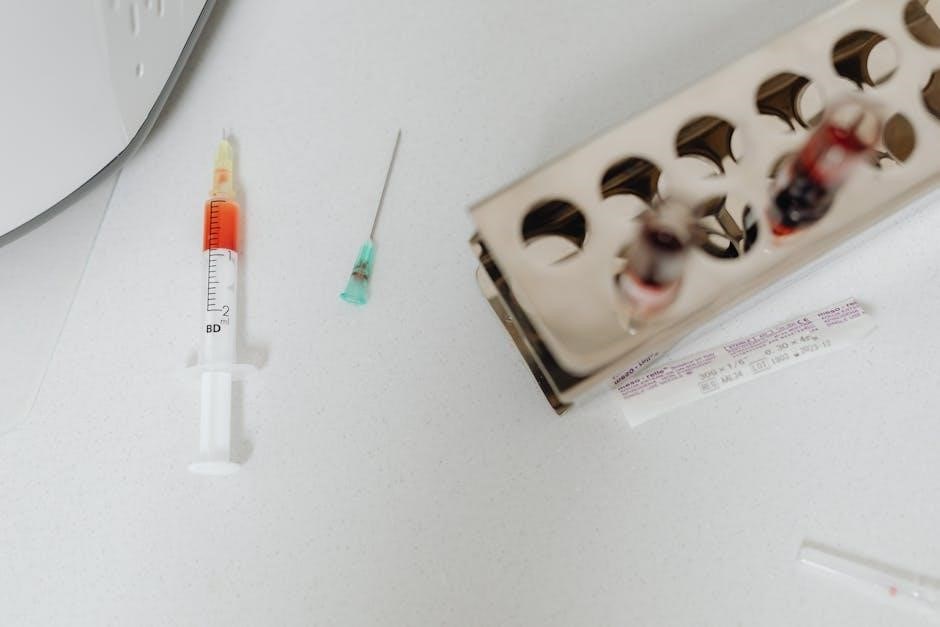
Medical Terminology for Phlebotomists
Mastering medical terminology is crucial for phlebotomists. Worksheets provide comprehensive lists of key terms and abbreviations, such as venipuncture and hematology, ensuring accurate communication and procedure execution.
5.1 Key Terms and Definitions
Phlebotomy worksheets include essential medical terminology to familiarize students with key concepts. Terms like venipuncture, hematology, and phlebotomist are defined to ensure clarity. These terms are crucial for understanding blood collection procedures, specimen handling, and safety protocols. Worksheets often provide flashcards or matching exercises to reinforce memorization. Definitions are concise and relevant, focusing on practical application rather than theoretical complexity. By mastering these terms, students build a strong foundation for effective communication and accurate blood collection practices. Downloadable PDFs offer interactive exercises to test knowledge retention and understanding of critical vocabulary.
5.2 Understanding Medical Abbreviations
Phlebotomy worksheets often include sections dedicated to deciphering medical abbreviations, crucial for accurate blood collection and specimen labeling. Common abbreviations like NCCT (National Center for Competency Testing) and NHA (National Healthcare Association) are defined. Worksheets also explain procedure-related terms such as VP (venipuncture) and OD (order of draw). Interactive exercises, like matching games or fill-in-the-blanks, help students memorize these abbreviations. Understanding these shorthand terms ensures clarity in communication and reduces errors in laboratory settings. Downloadable PDFs provide comprehensive lists and quizzes to reinforce learning and retention of essential phlebotomy abbreviations.
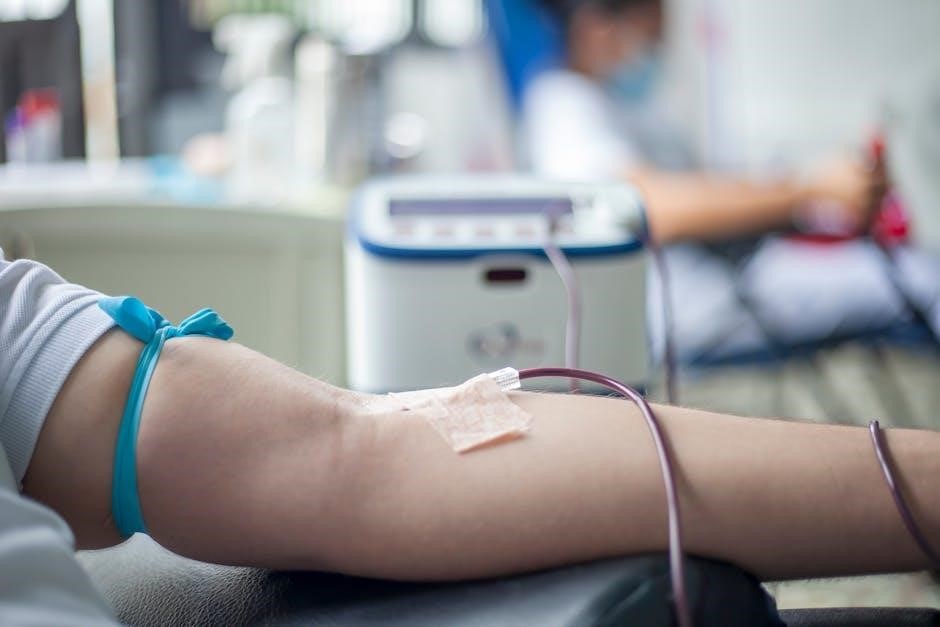
Practice Exercises and Quizzes
Phlebotomy worksheets include interactive exercises, quizzes, and drag-and-drop activities. These tools reinforce learning, improve retention, and prepare students for certification exams. Available in PDF format for easy access.
6.1 Multiple-Choice Questions for Certification Preparation
Phlebotomy worksheets feature multiple-choice questions designed to simulate certification exams. These questions cover blood collection techniques, medical terminology, and safety protocols. They help students assess their knowledge, identify gaps, and build confidence. Interactive PDF formats allow easy access and self-assessment. Regular practice with these questions enhances exam readiness and ensures proficiency in critical phlebotomy skills. Students can track their progress and focus on areas needing improvement, making these worksheets invaluable for successful certification preparation.
6.2 Interactive Drag-and-Drop Exercises
Phlebotomy worksheets include interactive drag-and-drop exercises, enhancing learning through hands-on engagement. These exercises cover topics like blood collection sequencing and medical terminology. Students can practice matching terms with definitions or sequencing steps in venipuncture. Visual and interactive elements improve retention and understanding of complex procedures. Available in PDF format, these exercises provide a dynamic way to reinforce classroom learning and prepare for certification exams. They offer immediate feedback, helping students identify areas for improvement and master phlebotomy skills effectively.

Certification Preparation
Phlebotomy worksheets PDFs are vital for certification preparation, offering practice questions, terminology exercises, and procedure reviews. They help students master key concepts and techniques required for national exams like NCCT and NHA, ensuring readiness for professional certification and clinical competency.
7.1 Overview of National Certification Exams (e.g., NCCT, NHA)
National certification exams like NCCT and NHA are critical for phlebotomy professionals, ensuring competency in blood collection techniques, safety protocols, and medical terminology. These exams assess knowledge of key concepts, such as venipuncture procedures, tube additives, and infection control. Phlebotomy worksheets PDFs provide essential study materials, including practice questions and terminology exercises, to help students prepare effectively. By mastering these resources, candidates can confidently approach certification, demonstrating their readiness for clinical practice and meeting regulatory standards in healthcare settings.
7.2 Tips for Passing the Phlebotomy Certification Exam
To excel in the phlebotomy certification exam, focus on practicing with worksheets and study guides. Review key concepts like venipuncture, tube additives, and infection control. Utilize interactive exercises and flashcards to reinforce terminology and procedures. Complete practice tests to assess your readiness and identify areas for improvement. Stay organized, allocate time for supervised practice, and adhere to safety protocols. By consistently applying these strategies, you can confidently master the material and achieve success on the exam.
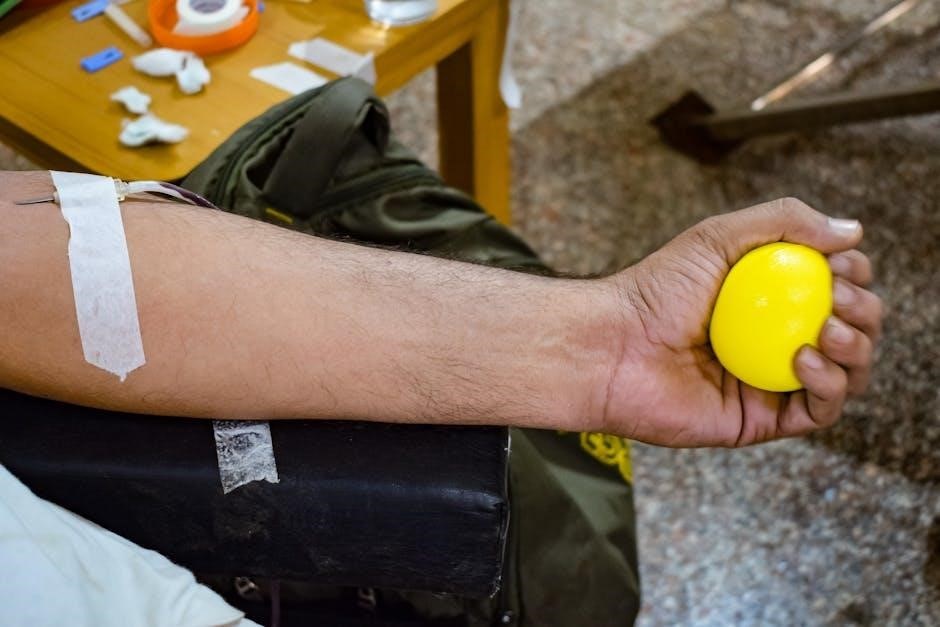
Resources for Phlebotomy Educators
Phlebotomy worksheets PDFs provide educators with comprehensive tools to enhance teaching. These resources include study guides, interactive exercises, and printable materials, supporting effective classroom instruction and student engagement.
8.1 How to Create Effective Worksheets for Students
Creating effective phlebotomy worksheets involves focusing on clear objectives, such as reinforcing key concepts like venipuncture techniques or blood components. Incorporate a mix of multiple-choice questions, case studies, and interactive exercises to cater to different learning styles. Use real-life scenarios to enhance practical understanding, ensuring students can apply their knowledge in clinical settings. Regularly review and update the content to align with current standards and educational requirements. Additionally, include answer keys and explanations to aid in self-assessment and improve retention.
8.2 Using Worksheets to Reinforce Classroom Learning
Worksheets are invaluable for reinforcing classroom learning by providing hands-on practice and application of phlebotomy concepts. They complement lectures by offering structured exercises, such as matching terms, labeling diagrams, and solving case studies. Incorporating puzzles or matching games can make learning engaging. Worksheets also allow students to review and master critical skills like blood collection sequences and safety protocols at their own pace. By integrating real-life scenarios, educators can help students bridge theory with practical application, enhancing their readiness for clinical environments.

Troubleshooting Common Issues
Phlebotomy worksheets often address common challenges, such as difficult venipuncture cases or patient anxiety, by providing practical solutions and tips for effective problem-solving in real-life scenarios.
9.1 Managing Difficult Venipuncture Cases
Difficult venipuncture cases often arise due to challenging vein anatomy or patient anxiety. Phlebotomy worksheets provide tips for success, such as using tourniquets effectively or employing warm compresses to dilate veins. Proper needle insertion techniques and handling of specimens are emphasized to ensure accuracy. Worksheets also address common issues like vein collapse or excessive bleeding, offering step-by-step solutions. By mastering these strategies, phlebotomists can improve their skills and patient outcomes, making blood collection more efficient and less stressful for both parties involved.
9.2 Addressing Patient Anxiety and Discomfort
Phlebotomy worksheets provide strategies to manage patient anxiety and discomfort during blood collection. Techniques include clear communication, proper positioning, and empathy to ease fears. Worksheets emphasize the importance of creating a calm environment and using distraction methods. They also cover how to handle common concerns, such as needle phobia, with reassurance and professional demeanor; By mastering these approaches, phlebotomists can reduce patient stress, ensuring a smoother procedure and fostering trust in healthcare settings. These resources reinforce effective patient interaction through practical exercises and real-life scenarios.
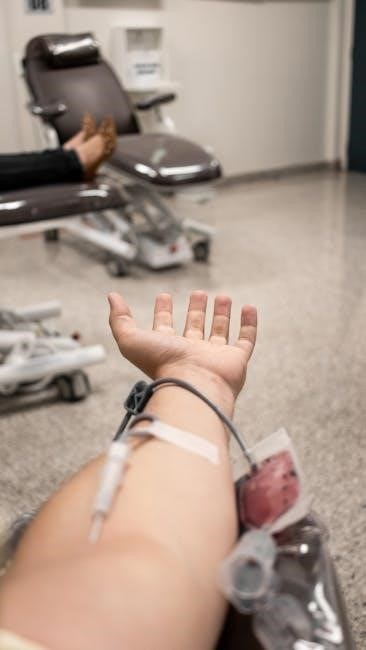
The Role of Worksheets in Competency Development
Phlebotomy worksheets play a vital role in competency development by tracking progress through supervised practice and documenting mastery of blood collection skills effectively and efficiently.
10.1 Tracking Progress Through Supervised Practice
Phlebotomy worksheets are invaluable for tracking progress during supervised practice, ensuring students meet competency standards. They document each supervised episode, allowing instructors to monitor improvement and provide feedback. By recording successful draws and challenges, worksheets help identify areas needing additional practice. This structured approach ensures students gain the necessary skills and confidence before progressing to unsupervised practice, aligning with professional guidelines and enhancing overall competency development in phlebotomy.
10.2 Documenting Competency in Blood Collection Skills
Phlebotomy worksheets play a crucial role in documenting competency by providing a structured format to record student performance during supervised practice. Each worksheet can include checklists for successful venipuncture, proper tube additives usage, and specimen handling. Instructors can review these documents to assess mastery of blood collection techniques, ensuring adherence to professional standards. This documentation not only validates a student’s readiness for certification but also serves as a permanent record of their proficiency in critical phlebotomy skills, fostering accountability and confidence in their abilities.
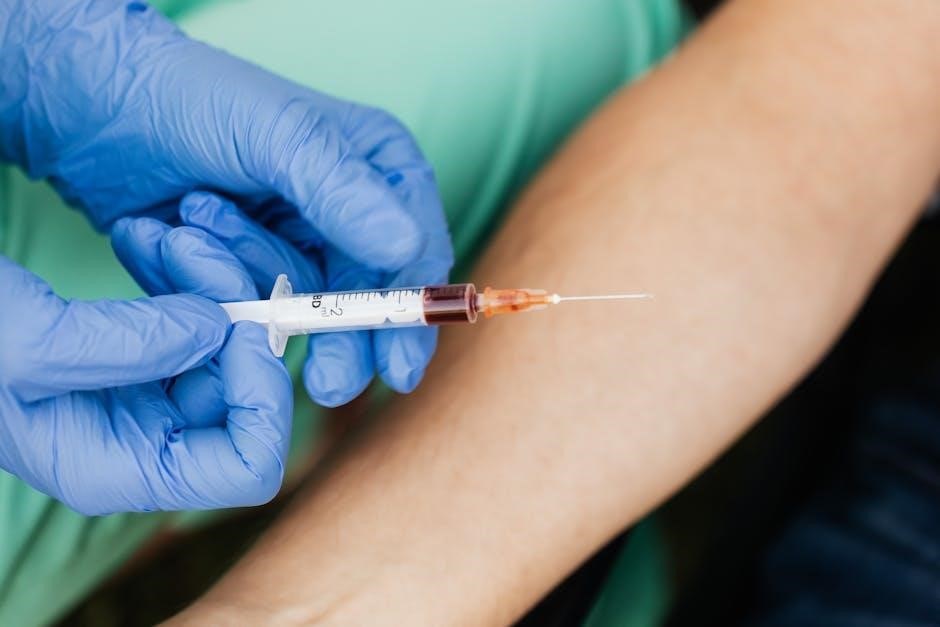
Additional Resources and Tools
Phlebotomy worksheets are complemented by additional resources, including recommended websites for downloads and supplements to study guides, enhancing learning and practice efficiency for students.
11;1 Recommended Websites for Downloading Worksheets
Several websites offer free and premium phlebotomy worksheets in PDF format. The Center for Phlebotomy Education provides downloadable resources, including study guides and practice exercises. Other platforms like Phlebotomy Exam Preparation and MedlinePlus offer interactive tools and quizzes to enhance learning. Additionally, websites such as NurseGroups and Phlebotomy Training Hub provide comprehensive workbooks and flashcards. These resources cater to both students and educators, ensuring access to high-quality materials for effective learning and certification preparation. They are designed to support skill development and knowledge retention in phlebotomy practice.
11.2 Supplements to Phlebotomy Study Guides
Supplements to phlebotomy study guides, such as interactive tools and video tutorials, enhance learning by providing hands-on practice. Flashcards and crossword puzzles help memorize medical terminology and procedures. Interactive exercises, like drag-and-drop activities, reinforce concepts such as vein selection and order of draw. These resources complement traditional worksheets, offering a well-rounded approach to mastering phlebotomy skills. They are particularly useful for visual and kinesthetic learners, ensuring a deeper understanding of complex topics. By integrating these supplements, students can achieve comprehensive preparation for certification exams and real-world applications.
Invaluable for mastery and confidence, phlebotomy worksheets simplify complex procedures, ensuring thorough preparation for certification exams and fostering continuous learning in the ever-evolving field of phlebotomy.
12.1 The Importance of Continuous Learning in Phlebotomy
Continuous learning is crucial in phlebotomy due to evolving medical practices and regulations. Staying updated ensures proficiency in new techniques and adherence to safety protocols. Worksheets provide accessible tools for ongoing education, helping professionals maintain competence and adapt to industry advancements; Regular review of procedures and terminology through these resources fosters a culture of excellence and patient safety. By committing to lifelong learning, phlebotomists can deliver high-quality care and remain indispensable in healthcare settings.
12.2 Final Thoughts on Maximizing the Use of Worksheets
Phlebotomy worksheets are invaluable tools for enhancing learning and reinforcing key concepts. By incorporating these resources into study routines, students can actively engage with material, improving retention and practical skills. Worksheets provide structured exercises, quizzes, and real-world scenarios, making complex topics more accessible. Educators can also use them to track progress and ensure competency. Leveraging these tools fosters a deeper understanding of phlebotomy, ultimately leading to confident, skilled professionals. Their versatility and comprehensive coverage make them essential for successful training and certification preparation.

